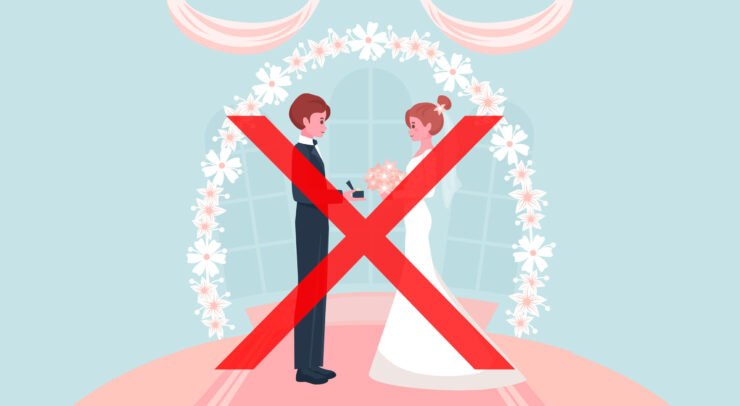Sassy advice from one of Canada’s top financial experts
Ali Schwabe | Fulcrum Staff
Photo courtesy of Gail Vaz-Oxlade
IN BETWEEN HELPING couples tackle their money issues on the television series Til Debt Do Us Part and taking divas down a notch on Princess, author and television personality Gail Vaz-Oxlade took some time to give students the lowdown on debt, OSAP, and living within your means.
Myth #1: All student debt is good debt
Vaz-Oxlade: Student debt has been considered good debt, and within certain parameters it is good debt. What student debt is allowing you to do is potentially earn a better income than you would be able to if you didn’t have a degree. The problem comes when you take on more student debt than you can reasonably manage once you graduate. The reason being is that you just can’t freaking get it paid off.
SEE ALSO: Student spending sorrows [Blog]
Myth #2: I can take on as much student debt as I need to pay for my education
I have a rule of thumb. I have a new book coming out called Money Rules and one of the rules of thumb is: Don’t graduate with more than your first year’s net income in student debt. Reasonably you [shouldn’t take on what you] can’t afford to pay back…unless you have special circumstances—you’re living at home, nobody’s charging you rent, you know. But for most people who want to get on with their lives, graduating with more than one year’s net income in student debt [is a problem]. And that’s net income, not gross. Because you do not make your gross income—you and the government make your gross income. So it’s one year’s net income that should be the maximum [loan] that you aim [to take on].
So if you’re going to graduate from school and you expect your career choice to pay you $45,000 net a year then you can have $45,000 worth of student loans. Now the only exception to this is that in some professional careers you have to take on more student debt to get there, [for example] if you’re getting your PhD. But the likelihood is that you’re [going to] be earning significantly more anyway. So I still hold with the rule.
Myth #3: As long as I make the default payment on my Ontario Student Assistance Program (OSAP) loan, I’m fine
Part of the problem is that the whole system is set up to make your payments as low as possible. So for instance, under the default payment system under the [Ontario] student loan system, it takes you almost 10, 9.5 years or something. And the problem with that is that it’s designed to lower your payments so you think more debt is good. But who wants to put their whole freaking life on hold for 10 years until your student debt is gone?
People use the default. And what you really have to do is figure out how much you want your education to actually cost you. Because if you use the default system, your education will actually cost you more than twice as much as [the original loan] you graduated with [because of the extra interest it accumulates].
Myth #4: OSAP charges the lowest level of interest
Another big fallacy is that the student loan system charges you less interest than you could get at a financial institution, and it’s not true. You pay a premium for staying in the student loan system.
The way the student loan system is set up is that while you are in school, there is no interest cost. Until you graduate, the interest clock does not come on. If you stay in school for the traditional four-year undergraduate degree, they haven’t charged you a penny in interest in all that time.
So, when the clock comes on, it does not come on at the current rate. It comes on at the rate plus about four points. So you will pay four per cent more (approximately) on a fixed student loan through the student loan system.
The benefits that you get [are the repayment assistance plans so] if you think you’re ever going to default or if you think you’re ever going to need interest relief, you stay in the student loan system. If you graduate and your only plan is to get the hell out of debt, then what you would do is get a consolidation loan from a financial institution—assuming you’ve built a good credit history and you haven’t screwed it up by using stupid credit cards while you were in school or you used them sensibly—then you would be able to get a loan at about four per cent less than you could get through the student loan system. Then you would apply all that difference to pay off the loan.
Myth #5: OSAP’s six-month grace period is interest free
You know how the student loan offers you a six-month grace period after you graduate? People are under the impression that that grace period does not carry interest. It does. In other words what [OSAP] is … saying [is you have] six months to get a job. But the interest clock still came on. So even if you do not make a payment in that first six months—which you are allowed not to do—you are still paying interest. If you get a job on day two, you should freaking start paying your loans back.
Myth #6: If I can’t get an OSAP loan, I can take out a student line of credit and treat it like OSAP
If you need to borrow money to go to school, then you need to borrow money to go to school. It makes perfect sense. But a student line of credit is not free money; ultimately it will have to be paid back.
What you want to do if you’re using a student line of credit—if you’re using any credit, if you’re accumulating any debt at all—is you want to make sure you’re doing everything possible to mitigate the amount of debt that you’re racking up. The thing with a student line of credit as opposed to going through the student loan system is that you don’t get the deferral of the interest while you’re at school. So as you are in school the interest rate kicks in the minute you take a drawdown on your line. But any payment you put against the line immediately mitigates the amount of interest you are paying.
So, you go to work and you work and you get your paycheque and you put it directly against the line. And then if you need to take money back off you take money back off. But you don’t keep piling money up in a savings account while you have a student line open.
Myth #7: It’s September and I just got my OSAP loan/scholarship/other huge lump sum. I’m rich!
This is a big problem for a lot of kids, particularly when they go away in their first and second year and they haven’t gotten the gist of money management yet. They feel rich. The OSAP [loan] pays into your account, or you get your scholarship, or your grandparents make a withdrawal from your RESP [Registered Education Savings Plan] and send you some money—you feel rich. And what happens is, come January, everyone is out of money—if it takes that long.
There is a way of managing your lump sum and a way of managing your cash flow. The lump sum worksheet [found at Gailvazoxlade.com/resources.html] is designed to help you keep track of that load of money you got. Then recognize that it’s not just your lump sum payments that you have to manage, but also your cash flow [from part-time jobs, for example] while you’re at school.
So if you follow [my] system, what will end up happening is you will allocate the dollars [for your needs and wants] over the entire year. Because you’re not just looking at September, October, and November, but you’re also looking at February, March, and April, you won’t feel like you’re rich because you’ll have the sense that this is money that has to last a long time.
Myth #8: I’ll only be young once—now’s the time to have fun and not worry about debt
You’re students, you’re poor! Basically that’s my message. There’s going to be plenty of time for [big spending] once you’re earning a good living. I’m not saying you don’t hang out with your friends and have a great time. I’m saying you don’t do it with six beers in a night. You buy one beer and you hold on to that beer. You sip that sucker till it’s so warm it feels like pee going in before it’s pee coming out.
You do not waste money on crap. This is the huge dilemma, particularly for young people who have come from places where they have been allowed to have what they want when they wanted. You’re in high school and you get an allowance or you work and have no costs … you come from that to a place where you’re finally responsible for yourself, and it’s hard to make the adjustment.
You have to assume an air of poor student. You should be shopping in second-hand stores. There’s no reason why you can’t dress well buying second-hand clothes if you have a sense of style. Go to Value Village! Get good gifts. That’s when you hit people up for your good shit: you have a birthday coming, it’s Christmas coming, your sister’s getting married. Knock your parents up for the dress. That’s when you go for that stuff. The rest of the time you are a poor student.
And incidentally, if you’re going to graduate with student debt, you should practice being a poor student so that when you become a worker you can continue to live like a poor student until most of that debt is gone.





